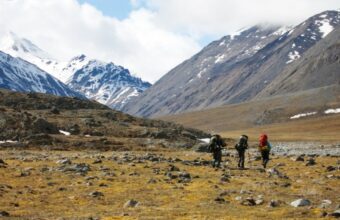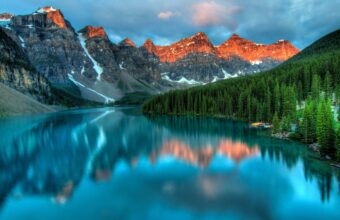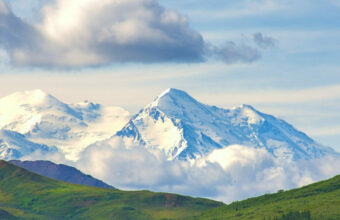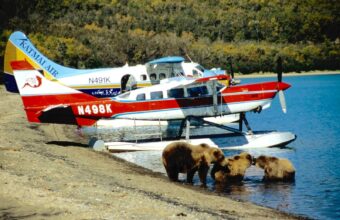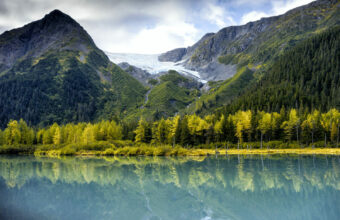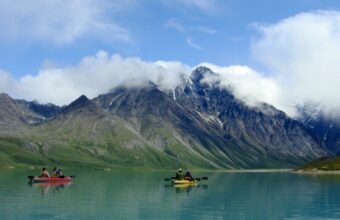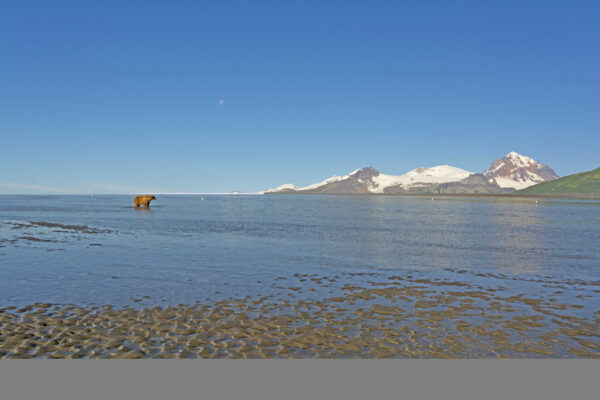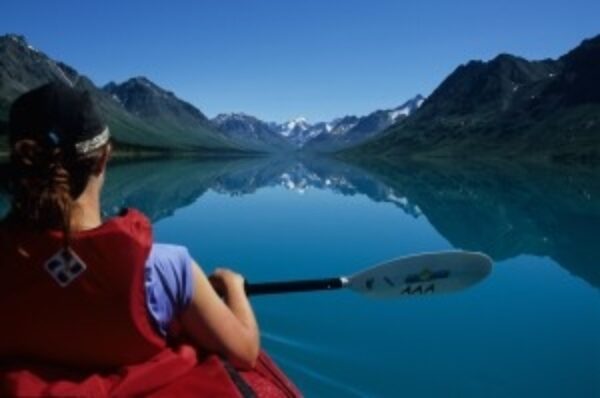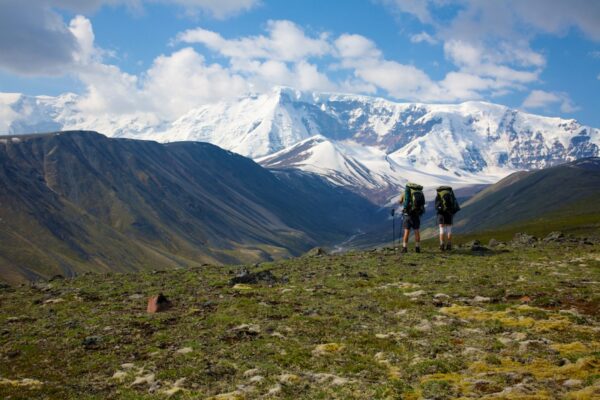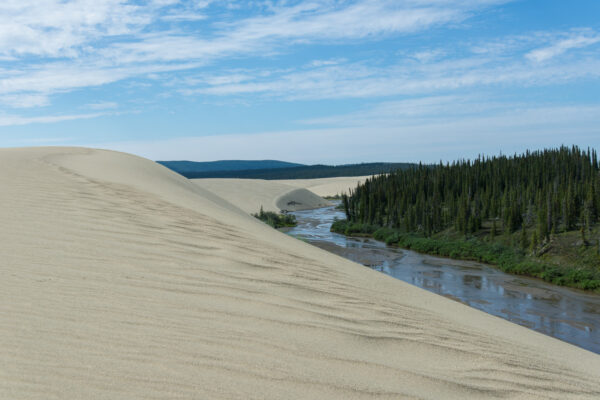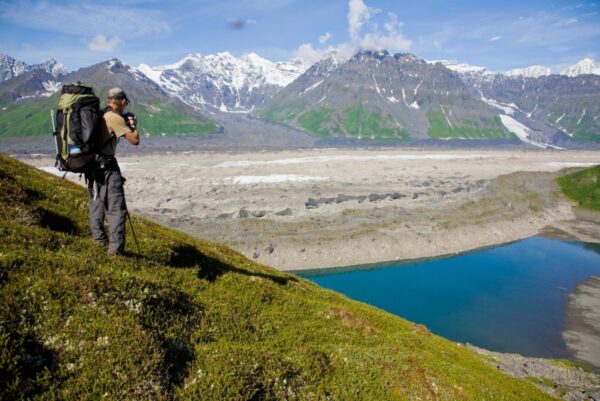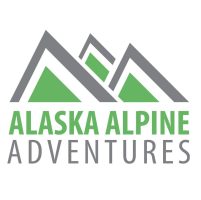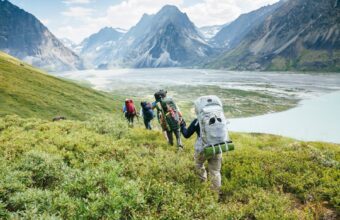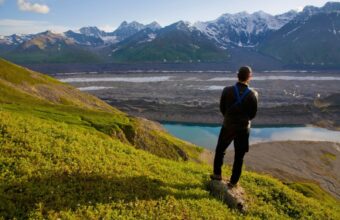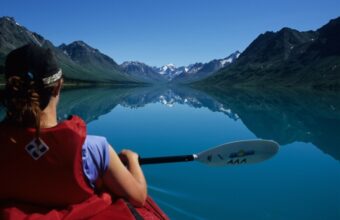Alaska's Best National Parks
Alaska's most stunning national parks and how to visit them
There’s the great outdoors and then there’s the wilderness. And then, in a category all of its own, there’s Alaska.
Just over two million tourists visit Alaska each year: a drop in the ocean for a space that is larger than the next three states combined. Most of that number arrive for fleeting visits via cruise ship; very few get to experience the true Alaska in all its glory.
There are 17 national parks in the state, along with dozens of other National Park Service sites, monuments, and state parks. With so much to choose from it's easy to feel overwhelmed. Even for the seasoned explorer, figuring out where to go, what to do, when and how can feel like an adventure too far.
The following pages will help ease some of those doubts. We’ve provided expert guidance on some of Alaska's best and most beautiful national parks, with handy reference charts on the types of activities to be found in each one, along with all the essential trip planning information you’ll need.
Ready to go? Here's our rundown on Alaska's best national parks, where to go, and what to do when you get there.
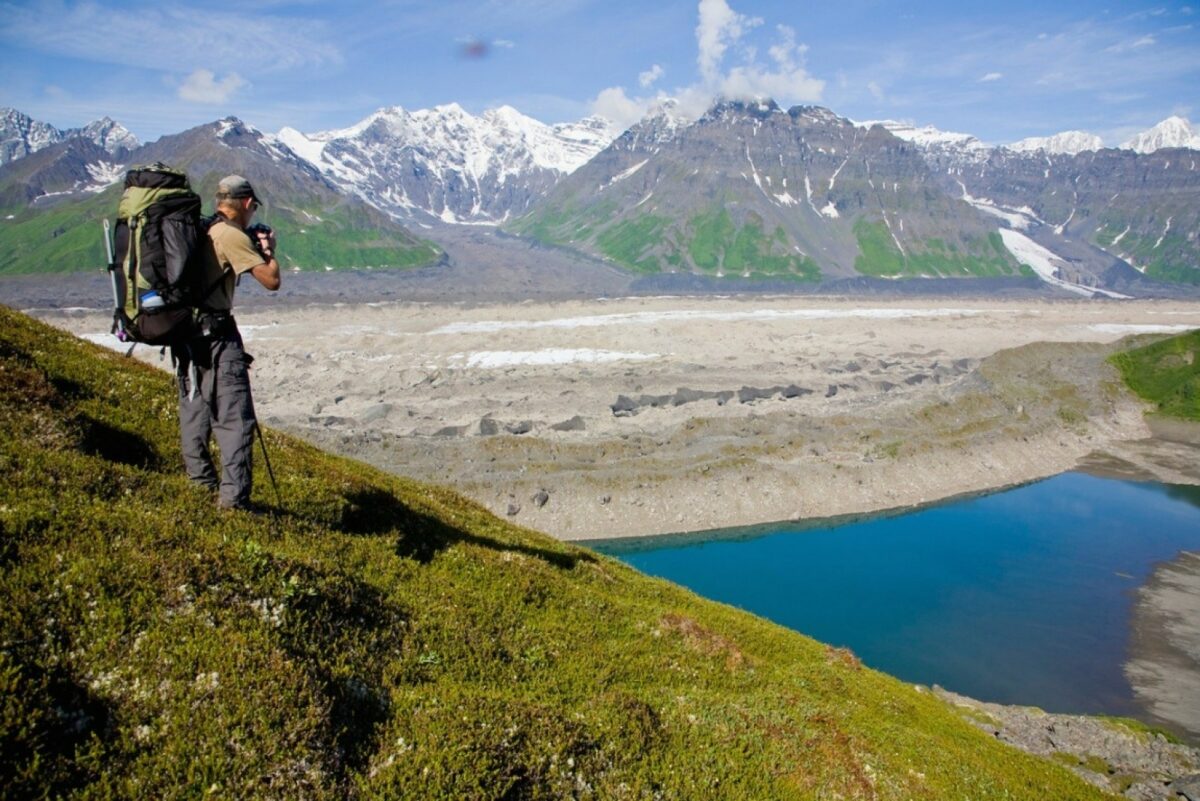
Backpacking in Denali National Park
Alaska's best national parks
Where to go, what to do
The vast majority of visitors to Alaska come here on a fleeting visit, usually by cruise ship. Here's how to do the exact opposite. Stay a while, get out into the wilderness (with a qualified guide!) and enjoy America's last frontier.
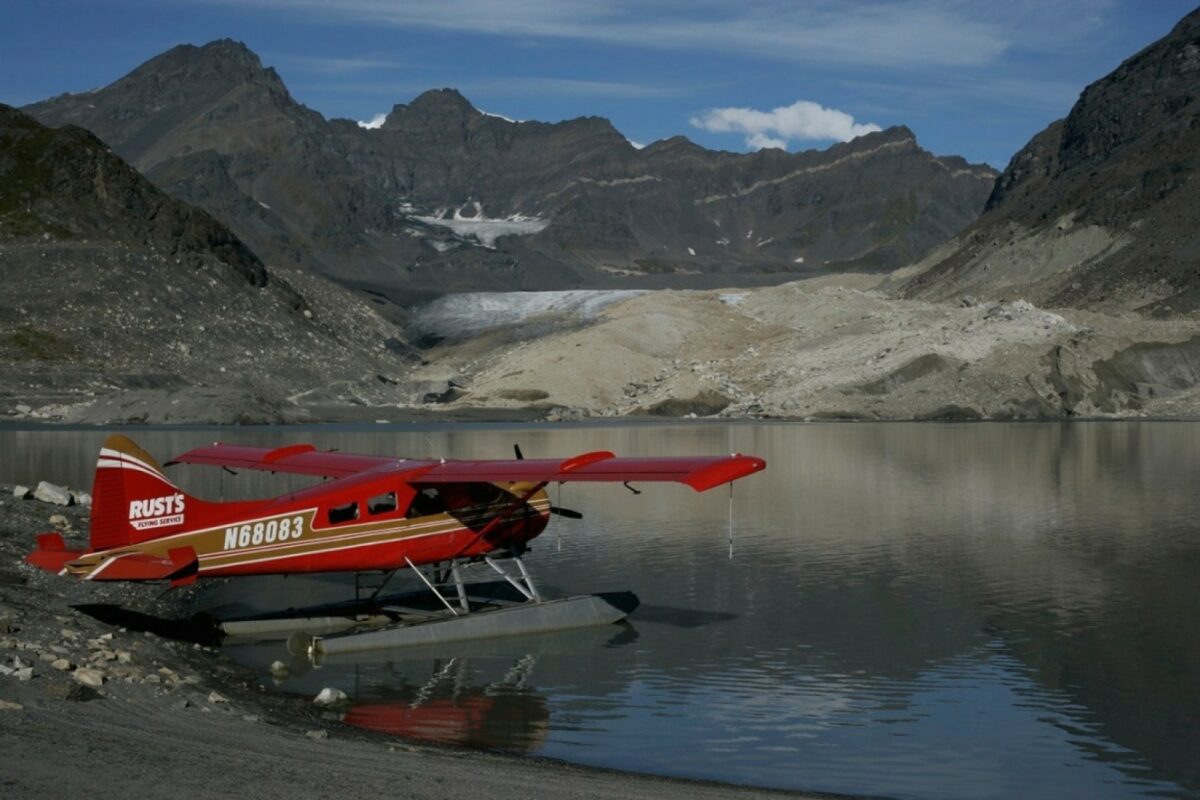
A floatplane is the best way to explore Denali's backcountry
Denali National Park
Best national park for: Guided backpacking trips
Activities: Hiking, backpacking, rafting & ATV
Wildlife: Brown bears, golden eagles, moose, black bears
Famous for: 20,310' (6,200m) Denali, Ruth Gorge and Glacier
Visitors per year: 560,000
Getting there: Park entrance is off the Parks Highway, easily reached by vehicle (120 miles south of Fairbanks; 235 from Anchorage)
Denali National Park and Preserve is a sprawling, 6-million-acre land of snow-clad peaks, tundra-carpeted hills and rushing glacier-fed creeks.
With easy access from the road system and home to Denali (formerly Mt. McKinley), the tallest mountain in North America, this is one of the most-visited parks in Alaska, with an enormous variety of wilderness excursions—from flightseeing to whitewater rafting and ATV tours—to choose from.
Popular guided activities in Denali National Park include backcountry backpacking, basecamp exploration, photography safaris and rafting day trips. Skiing and snowshoeing are also popular. Most of this is done off-trail: there are no established long-distance trails.
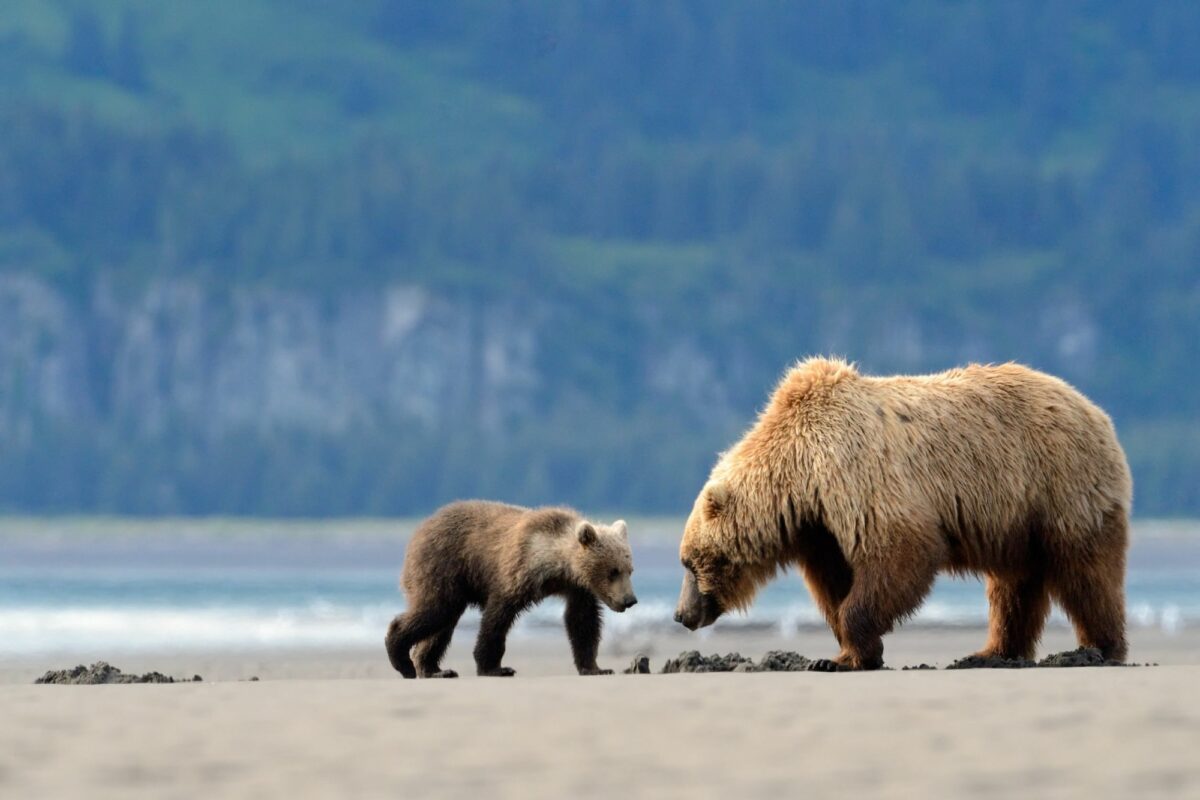
Bears on the hunt in Katmai National Park
Katmai National Park
Best national park for: Bear watching
Activities: Hiking, backpacking, climbing, fishing
Wildlife: Brown bears, salmon
Famous for: Valley of Ten Thousand Smokes, bear-viewing at Brooks Camp
Visitors per year: 37,000
Getting there: Park headquarters are located in King Salmon, which is 290 air miles southwest of Anchorage.
Broad river flats, looming mountains, and the Valley of Ten Thousand Smokes—the stunning, desolate remains of the 20th century's largest volcanic eruption: That's what you'll find in Katmai National Park, alongside the park's famous brown bears gorging on floods of incoming salmon.
Visitors also come here for the paddling, backcountry hiking and fly fishing, although some of the fishing is catch and release only.
For backpacking and hiking, keep in mind that Katmai National Park has just five miles of maintained trails, the rest is pure backcountry adventure. Navigation and survival skills for rapidly changing, often stormy conditions are essential. Consider visiting with a professional outfitter.
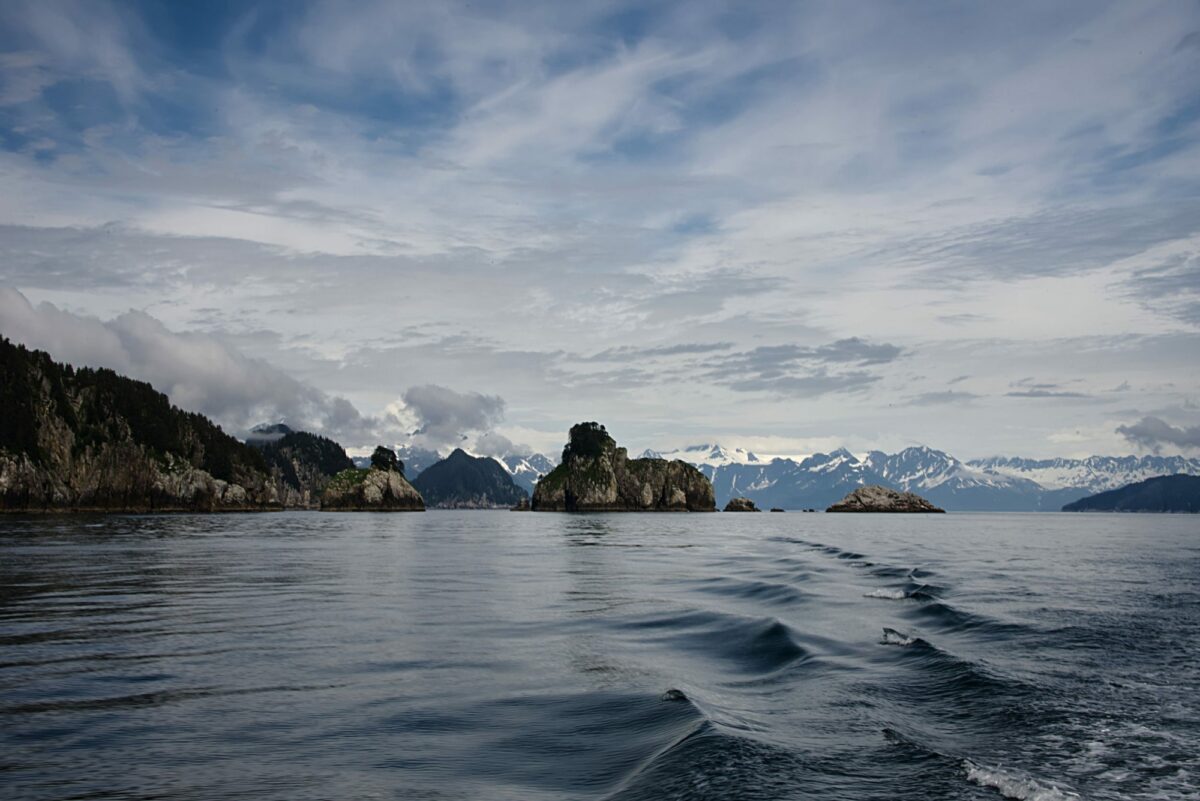
Discovery Bay in Kenai Fjords National Park
Prince William Sound & Kenai Fjords National Park
Best national park for: Ice hiking & climbing
Activities: Hiking, Skiing, Kayaking
Wildlife: Mountain goats, porpoises, sea otters
Famous for: Tidewater glaciers and fjords, wildlife watching, and glacier viewing
Visitors per year: 250,000+ in PWS; 297,000 in Kenai Fjords
Getting there: Access PWS through Whittier (60 road miles from Anchorage); Valdez (300 road miles from Anchorage) and Cordova (45-minute flight from Anchorage).
Prince William Sound (PWS) sits in a calm, well-sheltered inlet on the Gulf of Alaska. It hugs the state’s south coast, cradled between the Kenai Peninsula and the Southeast panhandle and is protected by three large barrier islands. Kenai Fjords National Park covers much of the eastern Kenai Peninsula, west of Prince William Sound. This is one of the few areas where you'll frequently have cell phone service and access to services like outhouses and established trails.
Kenai Fjords National Park's star highlight is the 700 square mile Harding Icefield, from which almost 40 glaciers flow. You can complete a challenging 4-mile hike (almost all uphill) to views of the top of the icefield (8.2 miles round-trip). This is not a technical hike or climb, but it is a gruelling hike that any visitor can be proud of completing, including the hardcore folks.
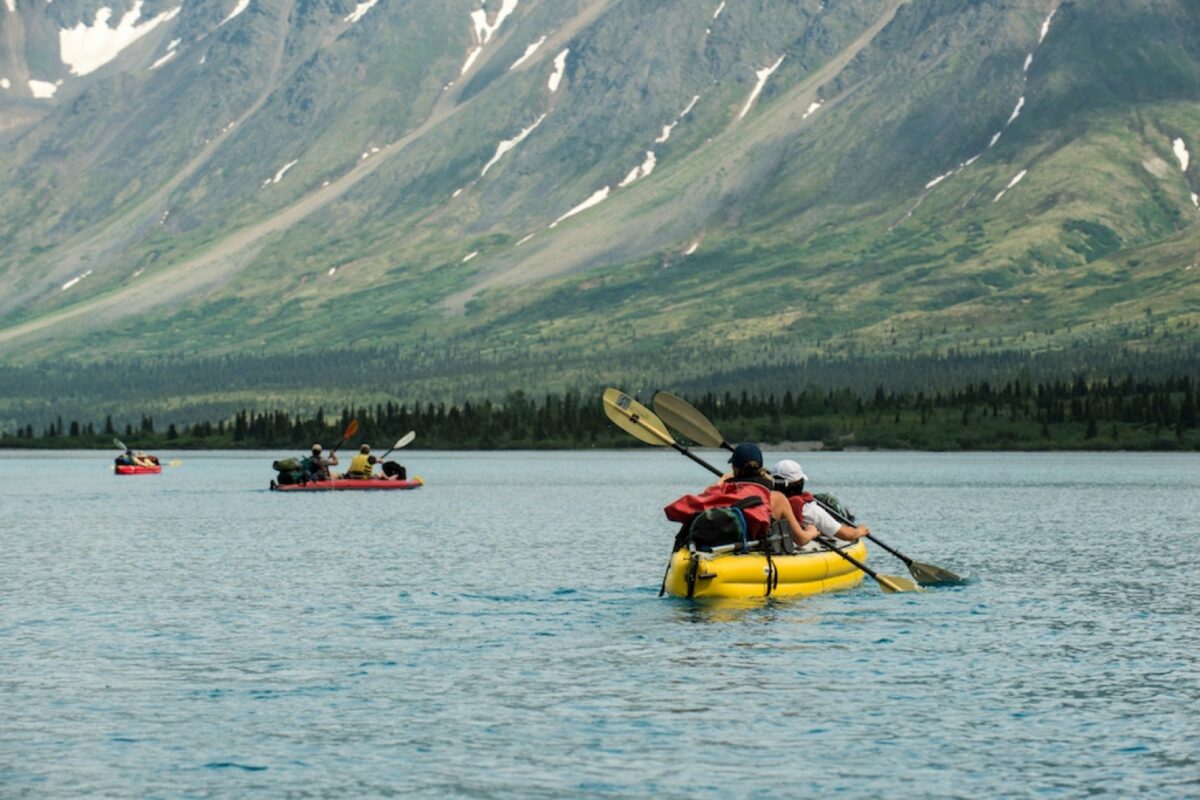
Kayaking on Twin Lakes in Lake Clark National Park
Lake Clark National Park
Best national park for: Paddling on Twin Lakes
Activities: Hiking, backpacking, climbing, skiing, packaneering, kayaking, rafting
Wildlife: Brown bears, caribou, golden eagles, salmon, moose, bald eagles, black bears, Dall's Sheep
Famous for: Richard Proenneke's cabin, Iliamna and Redoubt volcanoes, bear-viewing
Visitors per year: 17,000
Getting there: Usually reached by small plane, 100 miles (one hour flight) southwest of Anchorage.
If you live in or near Anchorage and want a quick day of bear viewing, you head for Lake Clark National Park and Preserve, which is just a short hour's flight away. But you can see much more than bears here: Lake Clark is also famous for its volcanoes and Richard Proenneke's historic, hand-crafted cabin, and it's a popular destination for fly fishing and paddling, too.
Bear-viewing along the coast is best from June through August, declining in September. Popular sites include Chinitna Bay, Crescent Lake, Silver Salmon Creek, and Shelter Creek/Tuxednia Bay.
This is a great place for birdwatching, with more than 185 documented species.
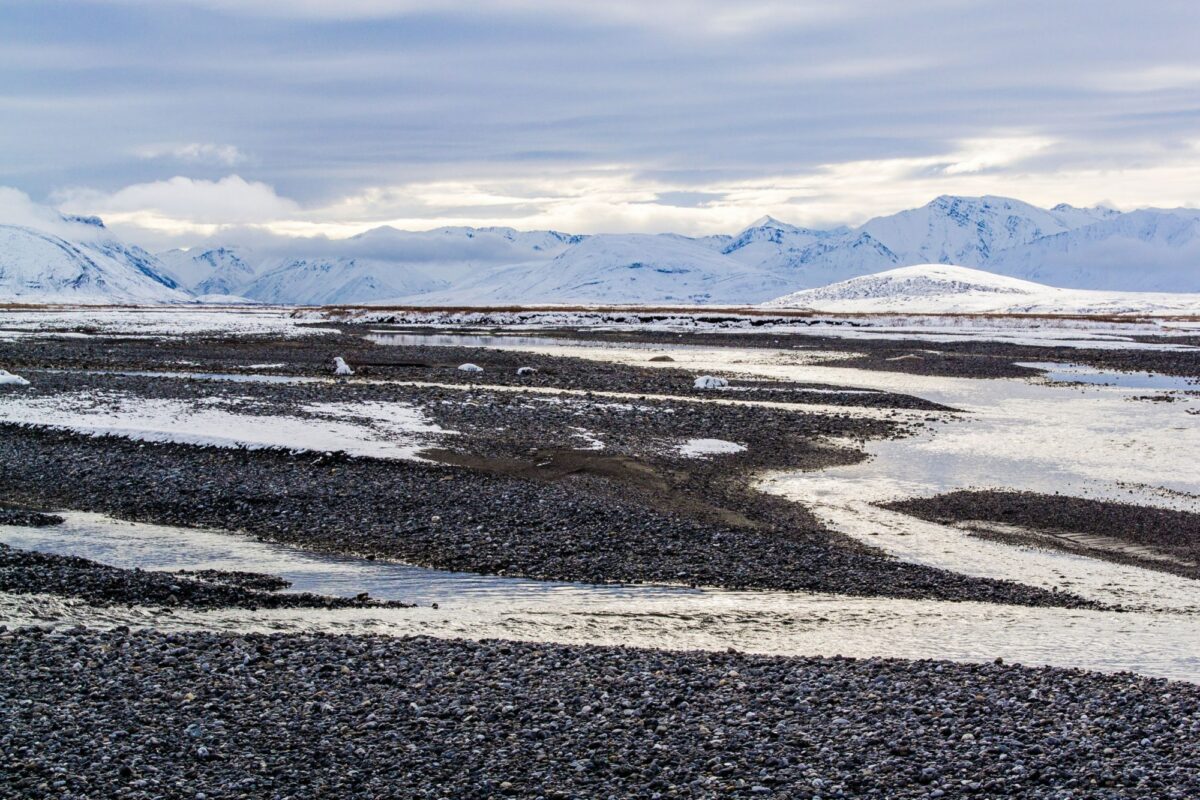
Ribdon River in Arctic National Wildlife Refuge
Arctic National Wildlife Refuge
Best national park for: Remote backpacking adventures
Activities: Hiking, backpacking, rafting, canoeing
Wildlife: Grizzly bears, caribou, muskoxen, golden eagles, moose, Dall's Sheep
Famous for: Enormous caribou herds; controversy over drilling for oil.
Visitors per year: 1,200 - 1,500
Getting there: Small-plane access from Fairbanks to either Arctic Village or Kaktovik, then bush plane into the park itself.
If you think of sprawling coastal plains and seemingly endless streams of caribou, you're probably thinking of the Arctic National Wildlife Refuge (ANWR to locals). This massive refuge may be best-known for the highly public battle over whether to open its borders to oil drilling, but this vast, trackless wilderness is also home to more than 200,000 caribou and a smattering of polar bears, best seen from the tiny village of Kaktovik.
The Arctic National Wildlife Refuge is a vast, trackless wilderness, ideally suited to remote hiking, backpacking, climbing and paddle/float trips.
This is a true wilderness—one of the most isolated places on earth, receiving fewer than 1,000 visitors each year. People generally visit as part of a guided or organised adventure tour.
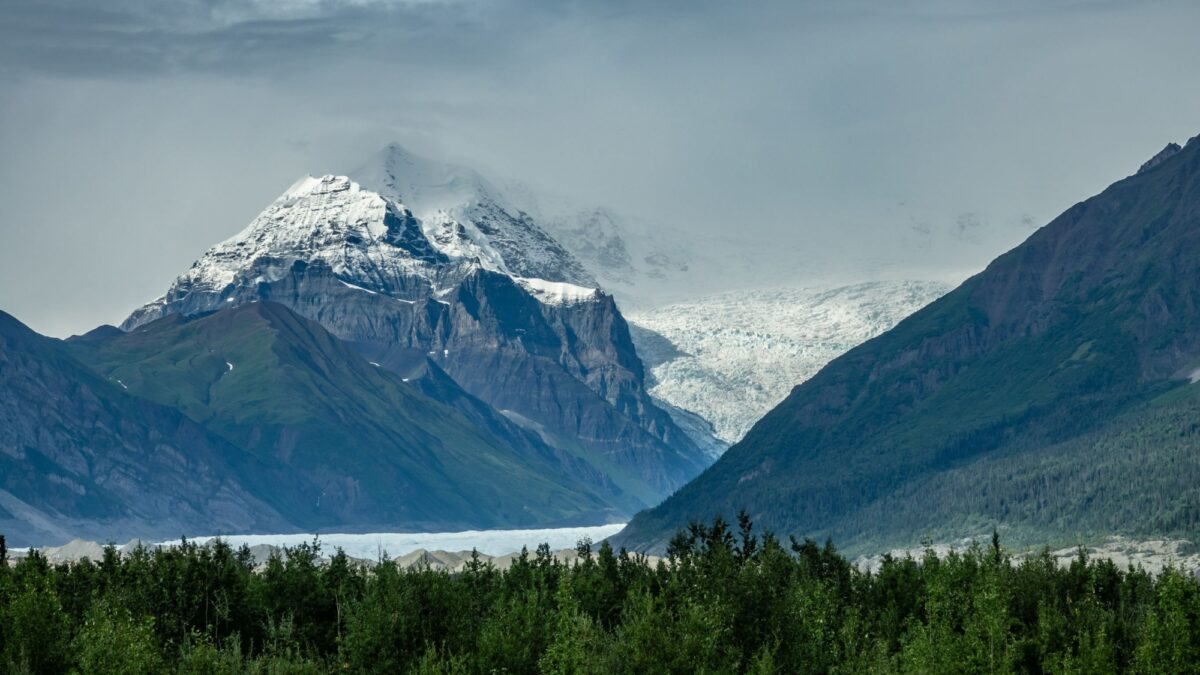
Wrangell St. Elias National Park
Wrangell-St. Elias National Park
Best national park for: Mountaineering
Activities: Hiking, backpacking, packaneering
Wildlife: Grizzly bears, caribou, golden eagles, moose, bald eagles, black bear, Dall's Sheep
Famous for: Its size (largest national park in the US), mountaineering, volcanoes
Visitors per year: 80,000
Getting there: One of few Alaska parks accessible by road (4-5 hours from Anchorage and Fairbanks). Two dirt roads lead into the park: Nabesna Road and McCarthy Road
Wrangell-St. Elias National Park may be best known for its enormous size; this 13.2 million acre behemoth is twice the size of Maryland. It's also a paradise for mountaineers, sporting some of North America's largest volcanoes but none of the traffic jams you'd find in Denali. Although access is usually easiest by air taxi, two dirt roads offer limited access into the park: The Nabesna Road, which has several stream crossings, and the McCarthy Road, which is famous for hiding stray railroad spikes that can puncture flat tires.
Wrangell-St. Elias boasts an incredible diversity of attractions, including the 14,163ft (4,316m) Mount Wrangell (an active volcano) as well as a number of impressive glaciers
The landscape offers spectacular opportunities for mountaineering, backpacking and day hiking with trails including the Skookum Volcano Trail and Caribou Creek Trail, both accessible from Nebesna Road.
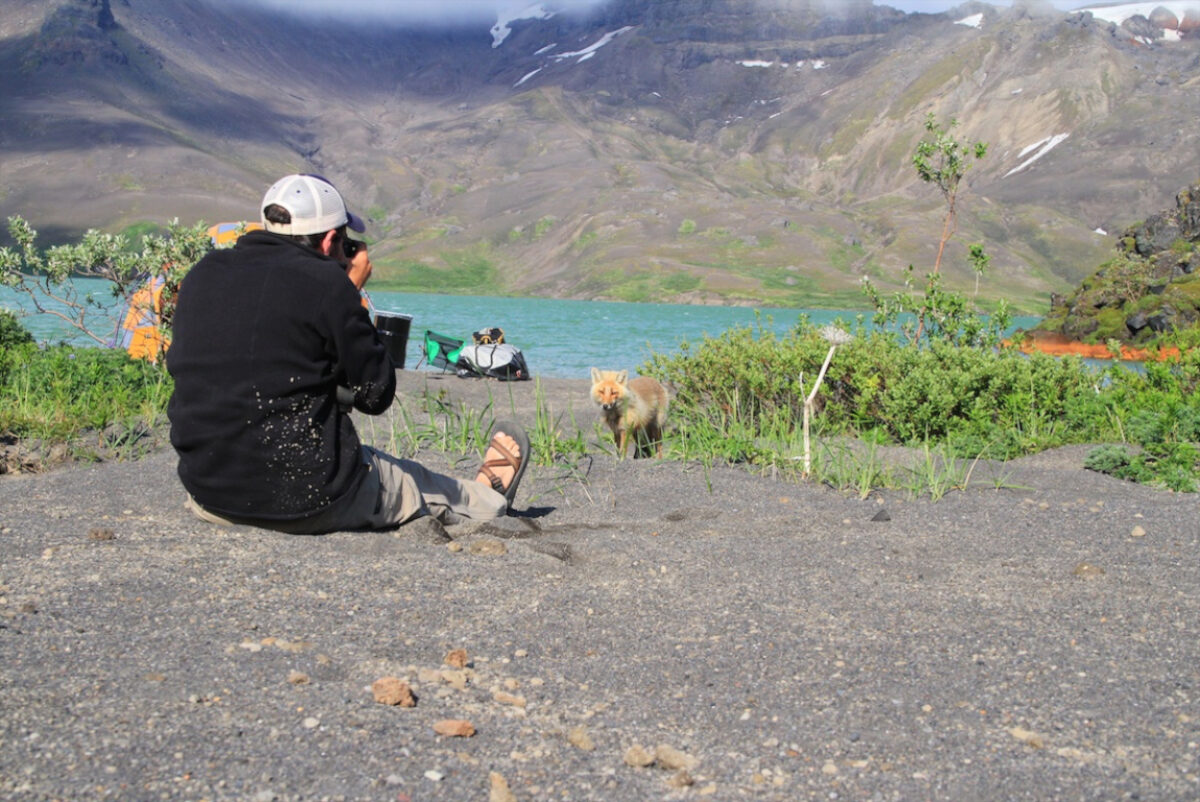
Photographing red foxes in Aniakchak National Monument
Aniakchak National Monument
Best for: Floating in absolute solitude
Activities: Hiking, backpacking, rafting
Wildlife: Brown bears, caribou, salmon, moose
Famous for: Its 2,500-foot-deep caldera, very low visitation
Visitors per year: 150
Getting there: 450 miles southwest of Anchorage, regular 1-hour flights from Anchorage to King Salmon
The six-mile-wide caldera in the heart of Aniakchak National Monument and Preserve showcases what's left when a mountain literally blows its top. But that's not all you'll find in this 600,000-acre park perched in Southwest Alaska near the start of the Aleutian Chain. The area is also well known for the wild Aniakchak River, which alternates peaceful stretches with challenging whitewater; and easy but trail-less walking across the caldera floor. But Aniakchak's greatest offering may be solitude, with only 150 visitors in a typical year.
Floating the wild Aniakchak River (a designated "national wild river"), which alternates between peaceful stretches and challenging, technical whitewater. It can take three or four days to float all the way from the river's headwaters at Surprise Lake to Aniakchak Bay
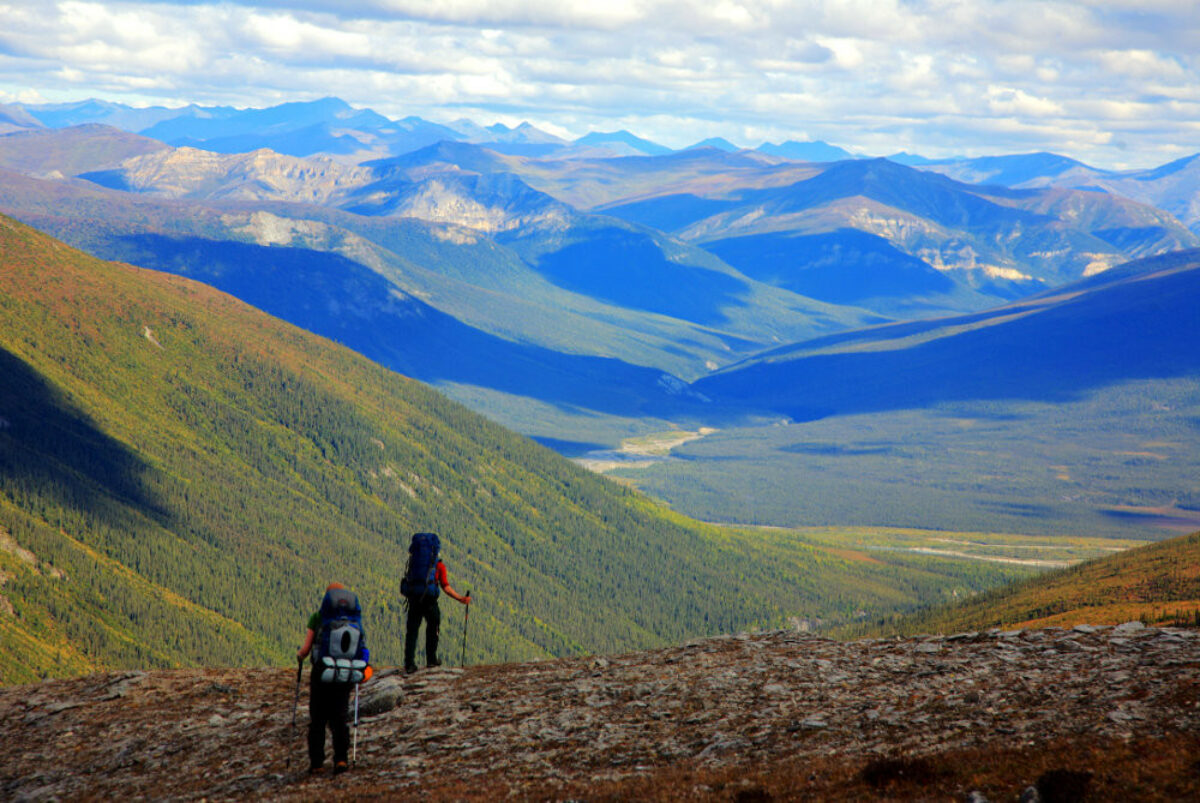
Hiking in Gates of the Arctic National Park
Gates of the Arctic National Park
Best national park for: Caribou & intact ecosystems
Activities: Hiking, backpacking, kayaking, rafting, canoeing
Wildlife: Grizzly bears, golden eagles, moose, bald eagles, Dall's Sheep
Famous for: Its intact Arctic ecosystem
Visitors per year: 11,000
Getting there: Access by small plane from the gateway communities of Bettles and Anaktuvuk Pass. Both have daily flights from Fairbanks
Although it's one of the most visited parks in the Arctic, Gates of the Arctic is still populated by far more caribou and birds than human visitors. This enormous park, sandwiched between Noatak National Preserve and Kobuk Valley National Park (to the west) and the Dalton Highway or Haul Road (to the east) supports one of the last completely intact Arctic ecosystems. This is a great example of the Alaskan maxim of using waterways as roads, with rivers and lakes helping to thread together the marvellously diverse landscapes you'll find here, from soaring, 7,000-foot granite peaks to wetland forests and the broad, flat Arctic tundra.
Backpacking and hiking are one of the key draws of the national park. To preserve the natural ecosystems, there are no official trails, however, it is advisable to follow the 'game trails' provided by wildlife. Keep in mind that travel is difficult, and even seasoned backpackers may manage only five miles in a day.

Sand dunes in Kobuk Valley National Park
Kobuk Valley National Park
Best national park for: Impressive sand dunes
Activities: Hiking, backpacking
Wildlife: Black and grizzly bears, wolves, moose
Famous for: Great Kobuk Sand Dunes, Kobuk River, aurora borealis viewing
Visitors per year: 15,000
Getting there: Charter an air taxi from Fairbanks to the two nearest communities: Kotzebue and Bettles
Located entirely above the Arctic Circle in the western Brooks Range, Kobuk Valley National Park is a broad valley encircled by the Baird and Waring mountain ranges, with the Kobuk River snaking through its middle for 61 miles. It’s best known for the desert-like sand dunes that cover most of its southern reaches. The biggest and most famous are the Great Kobuk Sand Dunes, which cover 25 square miles and can measure 100 ft (30 m) high.
Without road access, flightseeing trips are a popular mode of transport as well as a way to see the sights Kobuk Valley National Park has to offer, with one of the most notable being the Great Kobuk Sand Dunes (and Little Kobuk and Hunt River dunes).
Hiking and backpacking are popular activities in Kobuk Valley National Park. With no designated campgrounds and no road access, be sure to pack everything you will need on your trip into the wilderness.
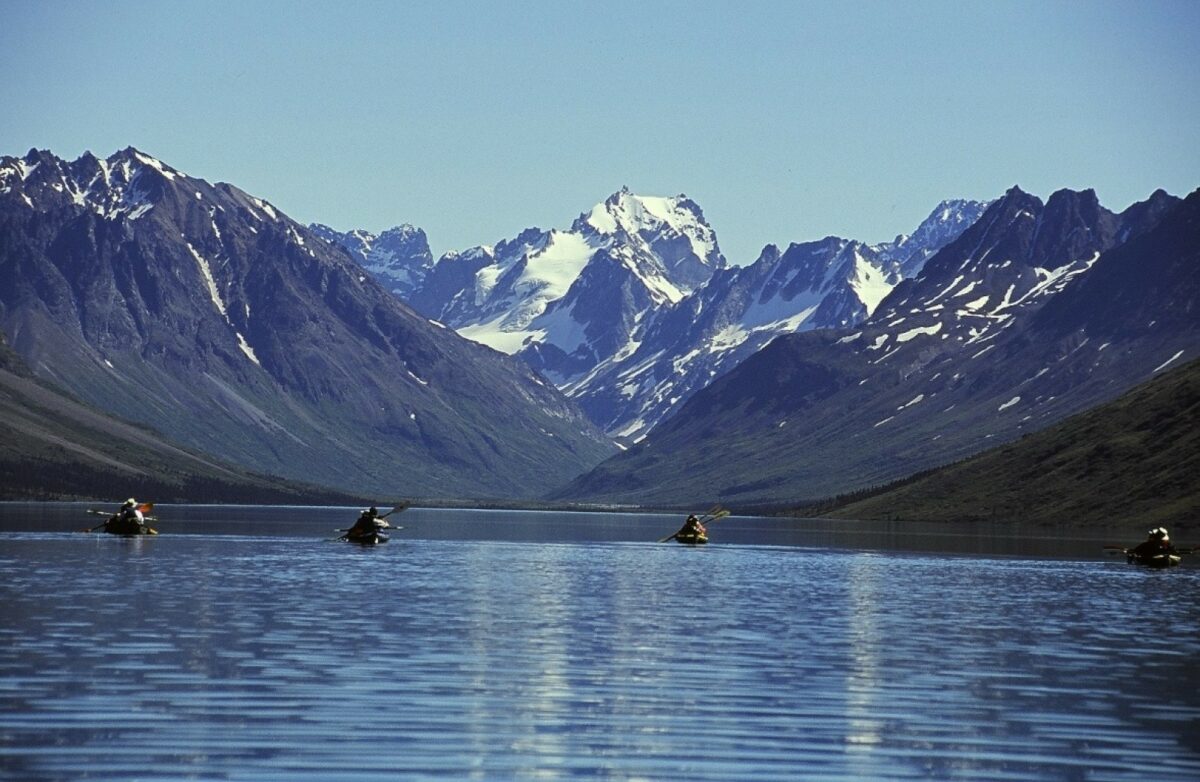
Kayaking on Alaska's Twin Lakes
Alaska's best national parks for...
Alaska's best national parks for kayaking & rafting
Kayaking and rafting are two of the most sublime modes of wilderness travel in Alaska. To paddle along the shore of a remote glacial lake or to stroke the tidal waters of an Alaskan sea is both quintessential and surreal. Cover distances on the water, without carrying the weight of a backpack.
Whether you prefer a sea kayak, inflatable canoe, or inflatable kayak, grab a paddle and flex your arm muscles for this ultimate form of non-motorised transport.
- Kongakut River to Arctic National Wildlife Refuge
Set out on an expedition down the Kongakut River. Rafting and hiking in the Arctic National Wildlife Refuge is simply a trip of a lifetime.
The Twin Lakes, located in the heart of Lake Clark National Park, are a wonderland of crystalline waters set beneath a rugged rim of mountains. A kayaking classic!
The Noatak River is a federally designated Wild and Scenic River as rich with tradition as it is with wildlife, and ideal for a rafting adventure.
- Turquoise Lake (Lake Clark National Park)
Combine the best of both worlds–terrestrial and aquatic–on a kayak-supported hike of Turquoise Lake. Kayaks are used for fully exploring the basin.

Hiking in Alaska's Denali National Park
Alaska's best national parks for multi-sport trips
Outdoor enthusiasts are spoiled for choice in Alaska. Want to try glacier trekking, backpacking, “flight-seeing”, wildlife viewing, kayaking, and rafting, but not sure which to choose? Looking for a mix of comfy lodges and rugged camping? Fear not. The possibilities for combining activities into multisport adventures are endless.
For “do it all” types, try these great places for combination trips.
- Aniakchak River National Monument
Mix hiking and rafting in the seldom-visited Aniakchak National Monument & Preserve, reaching the prestigious “Ring of Fire”, a volcanically active caldera.
Potentially Alaska’s best adventure trifecta! Sea kayak the sound, climb glacier ice in Chugach, and stretch your hiking legs under the spell of Denali.
- Arrigetch to Alatna by pack raft (Gates of the Arctic National Park)
Sample backpacking through the Arrigetch Peaks region of the central Brooks Range, then try canoeing down the Wild and Scenic Alatna River.
- Kenai Fjords, Wrangell-St. Elias & Denali
Three wonders of Alaska, many ways to see them. Hike, fish, kayak, raft, cruise, and fly your way through Alaska’s hallmark national parks, based in lodges or camping.
- Turquoise Lake (Lake Clark National Park)
Combine the best of both worlds–terrestrial and aquatic–on a kayak-supported hike of Turquoise Lake. Kayaks are used for fully exploring the basin.

Grizzly bears in Katmai National Park
Alaska's best national parks for bears & wildlife
Alaska’s wildlife is sized to the scale of the land. Here, the largest grizzly bears in the world feed on wild King salmon, also the biggest in the world. Herds of caribou roam the tundra, leggy moose munch suburban gardens, whales breach and bubble feed offshore of coastal towns, and millions of seabirds congregate as they complete their annual record-breaking migrations.
ANWR is aptly described as “America’s Serengeti”. Caribou, polar bears, grizzlies and muskoxen wander, and nesting golden eagles make this refuge their summer home.
Bear lovers take note: Katmai National Park is home to the largest brown bear population in the world, and holds the spawning grounds of literally millions of sockeye salmon.
- Denali Basecamp
Wildlife photographers know this is the spot for moose, grizzly and black bears, Dall sheep, wolves, caribou, lynx, wolverine, eagles, ptarmigan and of course caribou.

Alaska's best national parks for skiing
Who says Alaska’s outdoors are for summertime only? Get out in the backcountry for a fresh powder fantasyland all to yourself. From intense big mountain downhill to atmospheric Nordic-style touring, mountaineering on skis will bring you farther into the winter wilderness than you might imagine possible.
- Denali National Park
Skiing this zone has perks like low elevation, ample snow, tons of non-glaciated and manageable ski terrain, and amazingly close proximity to Denali itself.
- Lake Clark National Park
Ski the Chigmit peaks, which are active volcanoes rising directly from sea level. In the park’s Neacolas Mountains, tour European-style through glacier passes and dramatic peaks.
- Prince WIlliam Sound
Backcountry skiing just got a lot more comfortable. Catch an exclusive cruise on a yacht throughout the Chugach Mountains in Prince William Sound.
- Chugach and Talkeetna
Just a day trip away from Anchorage, this is the perfect first-timer winter wilderness experience in North America’s most accessible backcountry skiing terrain.
Visiting Alaska's national parks
An important note about travel in Alaska's parks and wilderness areas: These lands are truly wild and usually very remote; in some parks, it's possible to travel for many days and never see another human being. Always approach travel here from the mindset that you're completely on your own. You'll have no cell service, and in areas with tall mountains, satellite phone service isn't completely reliable either. There are usually no established services, trails or facilities in these parks, and access is almost always by boat or small plane only (there are no roads, either!)
These are all excellent reasons to hire a guide our tour company so you can experience Alaska's wildest areas comfortably and safely. Only consider taking a trip on your own if you have the appropriate gear, skill set and experience to handle backcountry travel, navigation and survival in Alaska's very challenging terrain and weather. Keep in mind that in the most remote places, rescue is never guaranteed, and if it does come it can take quite a while, so you should always think in terms of being completely self-sufficient.
Despite the remoteness of Alaska's parks, you might occasionally encounter private land dotted with camps or cabins, often sites for subsistence activities like hunting or processing fish. Respect these private areas and steer clear of them, even if they appear to be unoccupied.
Finally, never plan a trip based solely on the information given in a guidebook (including this one!) Conditions, routes and access all change rapidly in the Alaska wilderness. You alone are responsible for thorough preparation and making decisions, both beforehand and on the spot, to ensure your safety.

